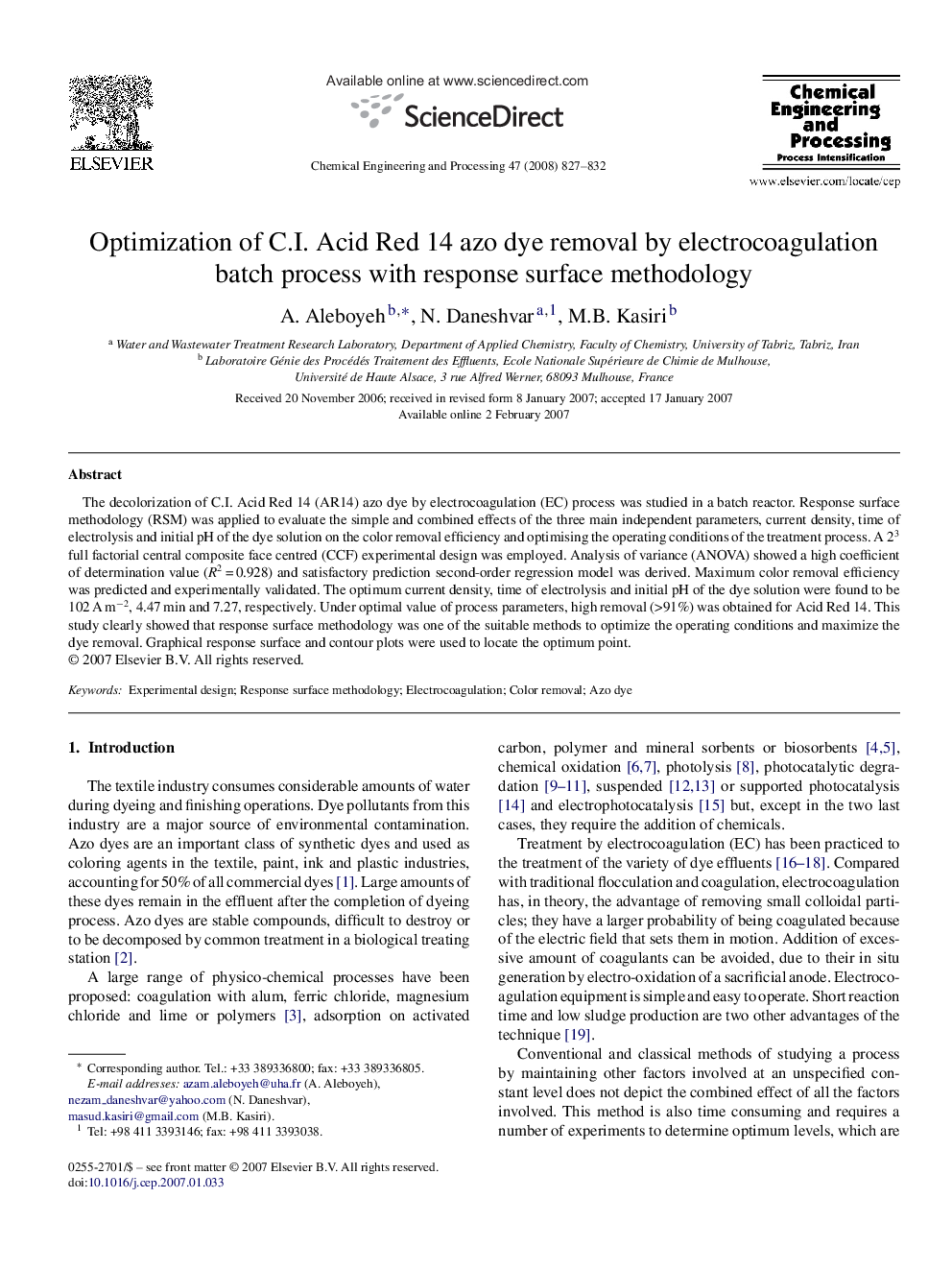| Article ID | Journal | Published Year | Pages | File Type |
|---|---|---|---|---|
| 687495 | Chemical Engineering and Processing: Process Intensification | 2008 | 6 Pages |
The decolorization of C.I. Acid Red 14 (AR14) azo dye by electrocoagulation (EC) process was studied in a batch reactor. Response surface methodology (RSM) was applied to evaluate the simple and combined effects of the three main independent parameters, current density, time of electrolysis and initial pH of the dye solution on the color removal efficiency and optimising the operating conditions of the treatment process. A 23 full factorial central composite face centred (CCF) experimental design was employed. Analysis of variance (ANOVA) showed a high coefficient of determination value (R2 = 0.928) and satisfactory prediction second-order regression model was derived. Maximum color removal efficiency was predicted and experimentally validated. The optimum current density, time of electrolysis and initial pH of the dye solution were found to be 102 A m−2, 4.47 min and 7.27, respectively. Under optimal value of process parameters, high removal (>91%) was obtained for Acid Red 14. This study clearly showed that response surface methodology was one of the suitable methods to optimize the operating conditions and maximize the dye removal. Graphical response surface and contour plots were used to locate the optimum point.
